Dinosaurs roamed the earth during the Mesozoic Era, which included the Triassic, Jurassic, and Cretaceous Periods. The term dinosaur is used to define any group of extinct carnivorous or herbivorous archosaurian reptiles. This broad term covers a diverse array of species that once existed. But have you ever wondered how fast these dinosaurs were?
In this article, let’s dive into the world of dinosaurs and discover the top 8 fastest dinosaurs ever!
But first, a disclaimer: all of the below facts are based on scientific conjecture. Facts about dinosaurs are simply theorized and cannot be confirmed. There is ongoing scientific debate regarding these animals, so while some scientists may claim the below facts about the fastest dinosaurs as true or likely, others may not.
1. Nanotyrannus – 50 mph

The Nanotyrannus is believed to reach the fastest speed of any dinosaur when sprinting.
Nanotyrannus is a genus of tyrannosaurus dinosaurs. They lived during the latter part of the Cretaceous Period. They were an average of 20 feet in height and weighed around 1,000 pounds. Like other tyrannosaurids, Nanotyrannus was known for having a large head and two small arms with only two fingers on each hand. Scientists believe that the Nanotyrannus could reach the fastest speed of any dinosaur when sprinting.
This species lived during the Cretaceous Period at the same time as the famous Tyrannosaurus rex. Because of this, the Nanotyrannus was specialized to catch small and faster prey than the T. rex could ever catch (since the T. rex was notoriously slow). The Nanotyrannus was a carnivorous predator and most likely preyed upon medium-sized mammals, lizards, and even other dinosaurs.
Fossils of the Nanotyrannus have been found in western interior areas of North America. Their habitat most likely ranged from forests and swamps to grasslands.
2. Ornithomimus – 43 mph
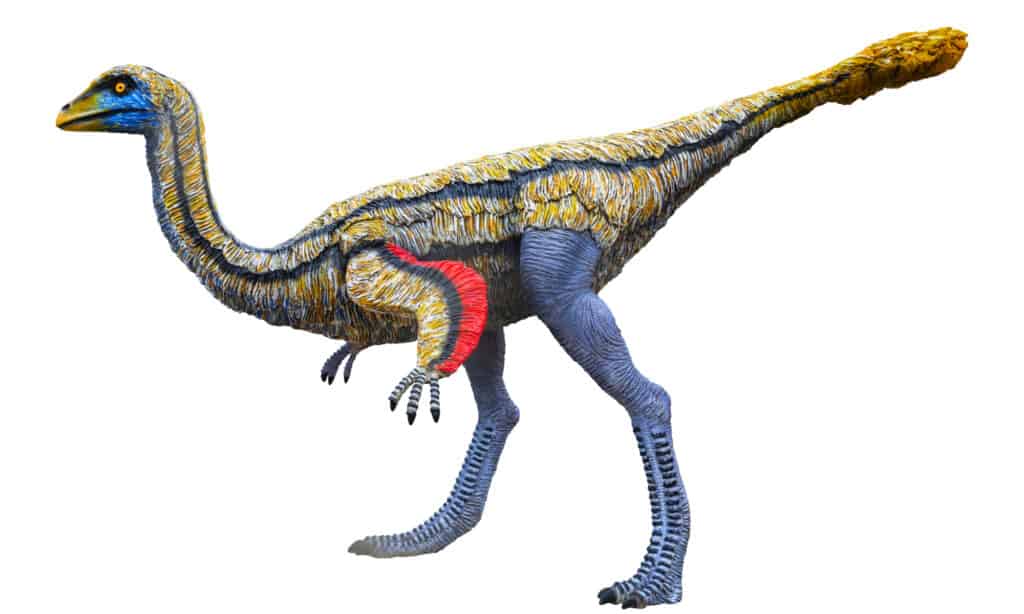
The Ornithomimus was one of the fastest dinosaurs to ever exist, reaching up to 43 mph.
Ornithomimus was one of the fastest dinosaurs to ever exist. This dinosaur lived during the late Cretaceous Period in North America when the continent was covered in forests, grasslands, and floodplains. Ornithomimus was, on average, 15 feet tall. Their body was tall and slender, with strong back legs and a long tail. They had short arms consisting of hands that contained just three fingers. The Ornithomimus resembled a modern-day bird, specifically an ostrich. This dinosaur was likely covered in feathers based on the data provided by related species with common ancestors.
Its beak lacked teeth and was used to quickly pick up food and grind up plant or animal material. Ornithomimus was omnivorous, with a diet consisting mainly of fruits, plants, insects, and other small animals.
3. Saurornithoides – 40 mph
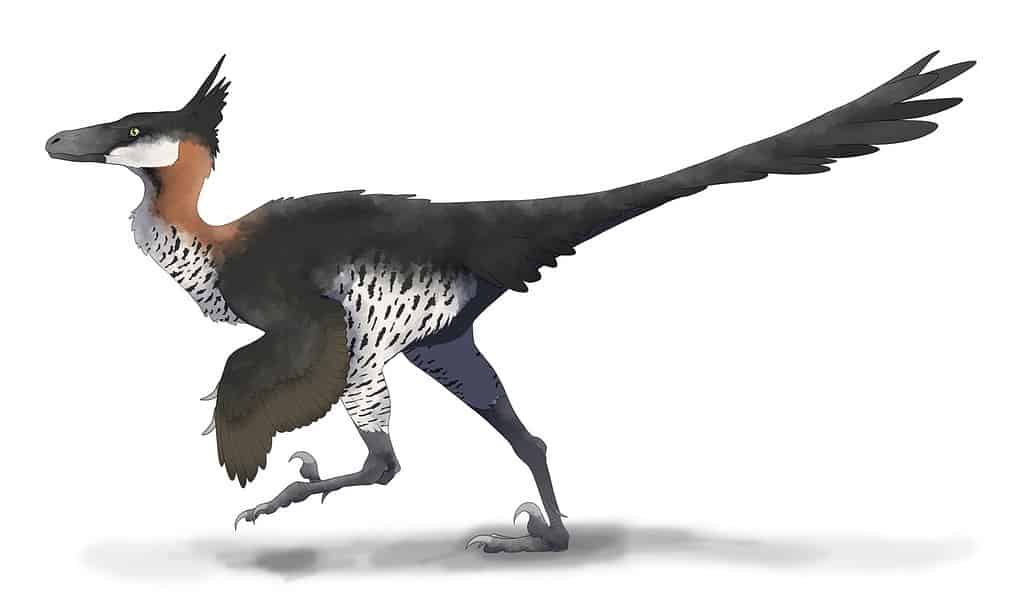
Saurornitoides reached an average height of 7 feet and an average weight of around 90 pounds.
Saurornithoides is a genus consisting of theropod dinosaurs. This genus was also active in the late Cretaceous Period. Saurornitoides reached an average height of 7 feet and an average weight of around 90 pounds. This dinosaur had a slender skull and a bird-like body. It also had a long tail that most likely helped it to balance while running at high speeds.
Its diet consisted of medium-sized animals, as it was a carnivorous predator. Saurornithoides had powerful jaws full of sharp teeth adapted to bite through the flesh of its prey.
Fossils of this species have been found in China and Mongolia. During the Cretaceous Period, these regions were wet and humid – more so than today. Saurornithoides likely inhabited swamps and floodplains.
This dinosaur’s fast speeds were helpful adaptations that allowed it to chase down fast prey and escape its own predators too.
4. Sinocalliopteryx – 40 mph
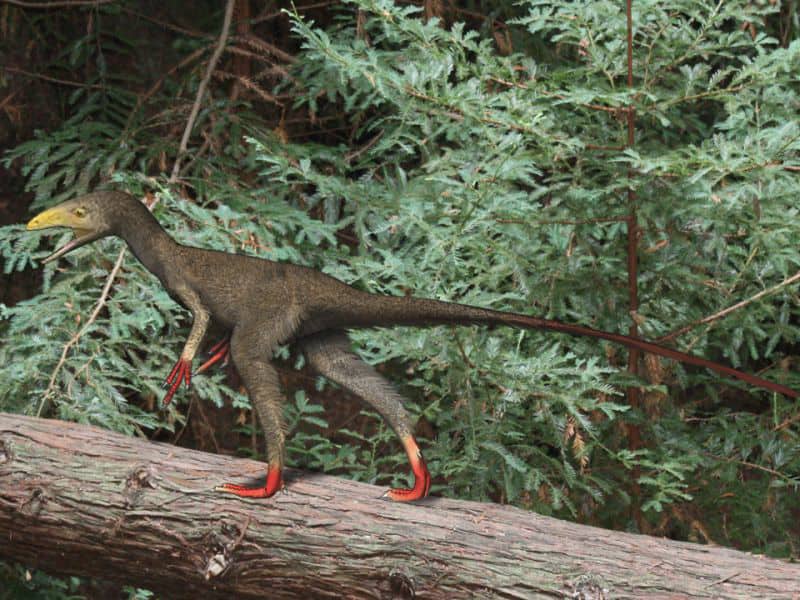
Sinocalliopteryx had a long and slender skull, large eyes and was at least partially covered in feathers.
Sinocalliopteryx is a genus of theropod dinosaur from over 100 million years ago. This animal was a relatively small dinosaur with an average height of 6.5 feet. Like other theropod dinosaurs, the Sinocalliopteryx had a long and slender skull and large eyes. Furthermore, there are preserved feathers found in the fossil records of these dinosaurs suggesting that the Sinocalliopteryx may have been covered or partially covered in feathers.
The diet of Sinocalliopteryx was carnivorous, consisting of small mammals, lizards, and even other dinosaurs. This dinosaur’s fast speed and good vision allowed it to track and chase its prey.
Fossils of this species from the early Cretaceous Period have been located in China. During the Cretaceous Period, the region was a warm and humid climate covered with dense forests.
5. Troodon formosus – 37 mph
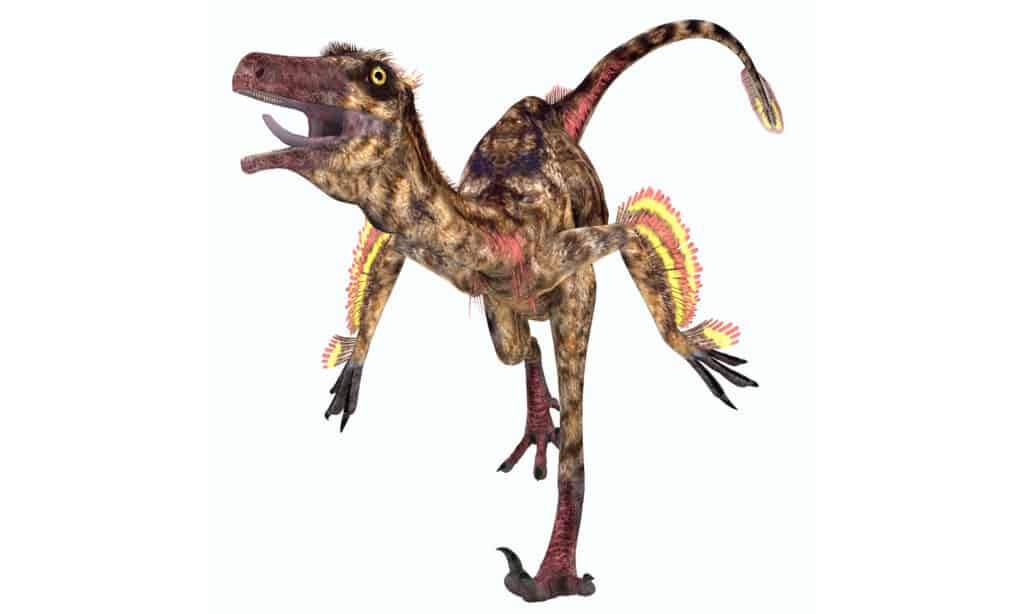
The Troodon is believed to run up to speeds of 37 mph making it one of the fastest dinosaurs.
Troodon formosus was a small dinosaur species that likely resembled a bird. This dinosaur lived during the Cretaceous Period, around 70 million years ago. This species was around 6.5 feet tall and weighed approximately 110 pounds. Troodon formosus’s light weight is likely due to its hollow bones. It also had a large brain and eyes compared to other dinosaurs. Additionally, its eyes were toward the front of its head as opposed to being on the sides like many other dinosaurs.
This species is known for likely having a high IQ due to its large brain size and partially opposable thumbs. Troodon stood upright on two slender legs with three toes on each foot. Currently, there is some debate amongst paleontologists on whether this species had feathers or not.
The Troodon was an opportunistic omnivore, feeding on small mammals or birds as well as other dinosaurs in combination with plant seeds, nuts, and fruits. Fossils of this species were found in the 1930s, scattered throughout North America.
6. Gorgosaurus – 30 mph

Gorgosaurus is believed to be one of the fastest dinosaurs, however, it wouldn’t be able to sustain that speed for long due to its large size.
The Gorgosaurus was a genus in the Tyrannosauridae family. The Gorgosaurus lived during the late Cretaceous Period. This dinosaur was large and carnivorous, with an average height of 28 feet and an average weight of 2.5 tons. Like other theropods, the Gorgosaurus had a narrow skull with a powerful jaw. The Gorgosaursus had incredibly strong, large, and muscular legs.
This dinosaur fed on large hadrosaurs and ceratopsians. And despite its size, the Gorgosaurus is believed to have been a great sprinter, but due to its large size, it was likely not able to maintain these speeds for very long.
Fossils from this species have been found in North America.
7. Gallimimus – 30 mph

The Gallimimus is known for its fast speed and could run up to 30 mph.
The Gallimimus genus is an ornithopod theropod. This dinosaur is known for its fast speed, which it most likely utilized to escape predators. Like many of the other fastest dinosaurs ever, the Gallimimus was bipedal, meaning it walked on two feet. On average, this dinosaur was two feet tall and weighed roughly 1,000 pounds. Its two legs were very muscular, but on the other hand, its arms were long and slender, with only three fingers on each hand. Its long arms are hypothesized to have been used to catch prey. Gallimimus also had a toothless beak. This dinosaur is thought to have had feathers based on related species with common ancestors and feather imprints left in the fossil record.
Gallimimus had an omnivorous diet, consuming both plant and animal material. Its beak was specialized for grinding plant matter.
In addition, fossils of this species have been located in Mongolia, dating around 70 million years ago from the late Cretaceous Period.
8. Velociraptor mongoliensis – 25 mph
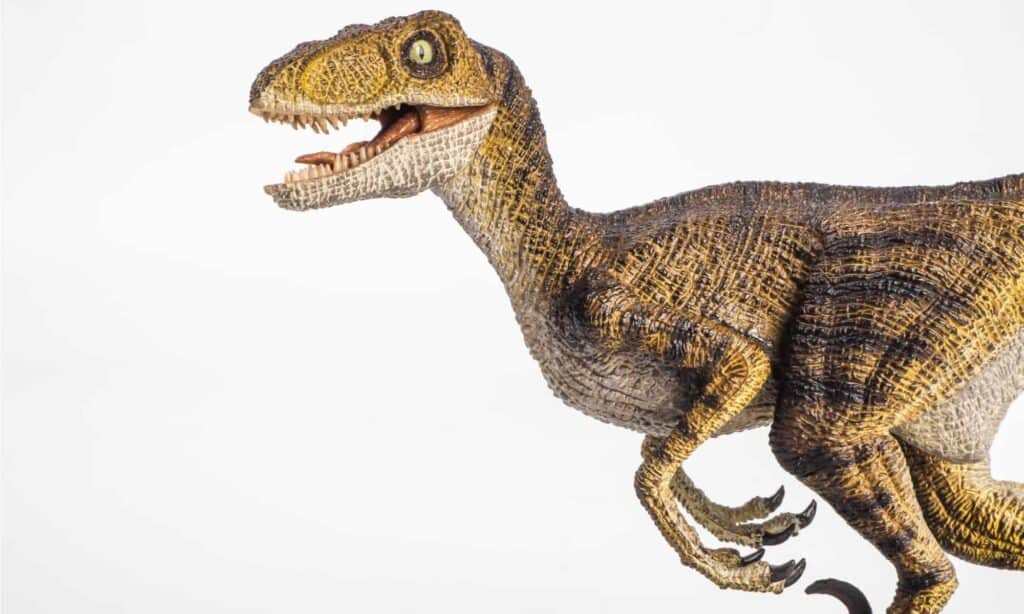
The Velociraptor had high energy, which contributed to its fast speed.
The Velociraptor mongoliensis was active during the late Cretaceous Period. This bipedal dinosaur stood at an average of 1.6 feet tall and 6.8 feet long. The Velociraptor was carnivorous, and this dinosaur’s prey of choice consisted mainly of medium-sized mammals and other dinosaurs. Due to this species’ high activity and fast speed, Velociraptor needed to frequently hunt to sustain their energy. It was a successful predator thanks to its speed, strong and lightweight limbs, and agility. Furthermore, this dinosaur had long talons on the second toe of its feet that it used to strike its prey. A defining feature of this species was its long slender tail that was an extension of its vertebra and could bend from side to side.
Velociraptor fossils have been discovered in Mongolia.
How Do Paleontologists Determine How Fast Dinosaurs Were?
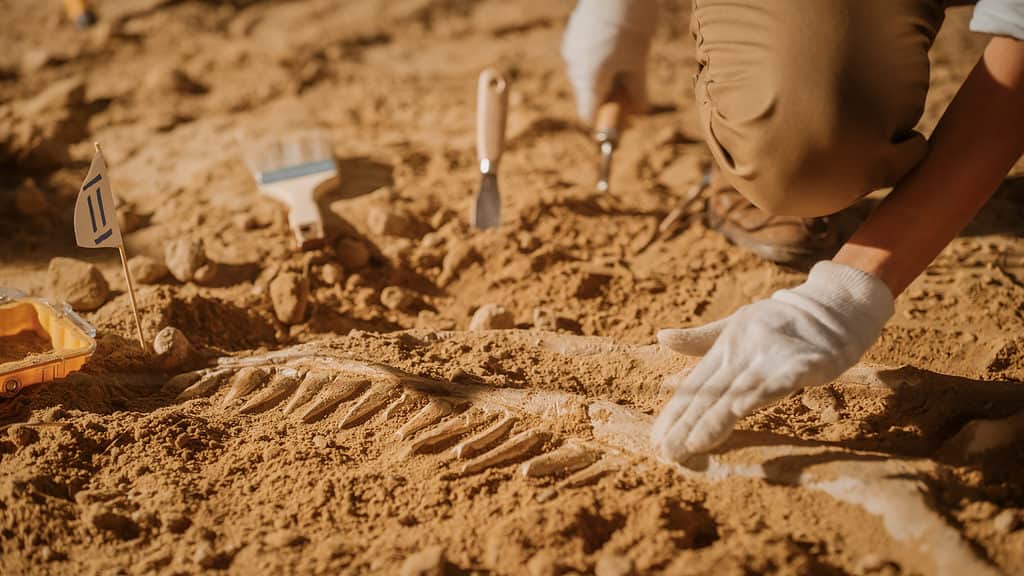
Paleontologists use information from fossilized footprints to estimate a dinosaur’s speed.
Paleontologists use indirect methods to make assumptions about the likely speed of dinosaurs. By analyzing a fossilized footprint, a paleontologist is able to determine the size and shape of the dinosaur’s foot and the depth of the footprint. This data can give insight into how much power was put into the dinosaur’s step. Furthermore, scientists use this data to measure stride length or the distance between footprints.
Using fossilized dinosaur bones, paleontologists can see where on the body muscle attachment occurred as well as the likely strength of that muscle. In addition, the posture of the dinosaur in question can give scientists insight into how it may have moved.
With all of the research, paleontologists are then able to make estimates about the speed and determine how fast dinosaurs were. Therefore, all of the speeds mentioned above are estimates based on scientific findings and should not be taken as absolute facts.








